Garendon Green (Loughborough) Flood Alleviation (2016)
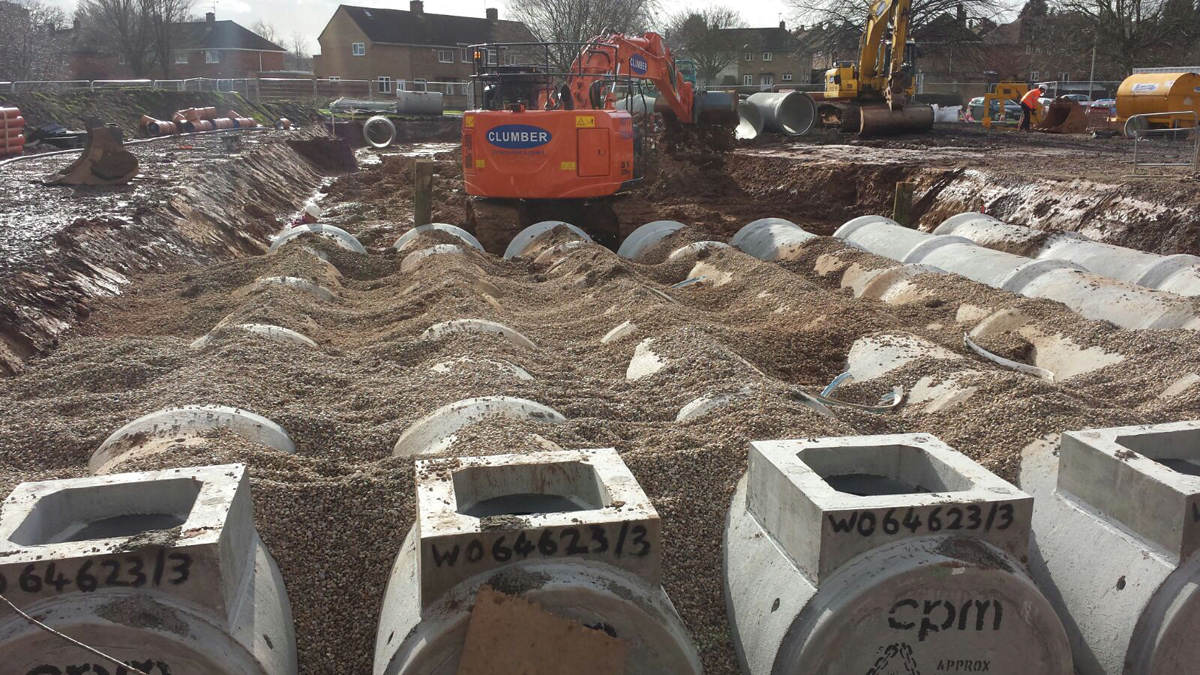
Installation of tank sewers with concrete pipes and off-site manholes - Courtesy of NMCNomenca
Garendon Green is a residential street situated approximately 1km to the west of Loughborough town centre, north of the university and west of the hospital. Garendon Green runs parallel to the Burleigh Brook into which the local surface water drainage outfalls. The combined sewer discharges into the main Loughborough trunk sewer approximately 1,300m downstream. In recent years the area has suffered repeated flooding from the combined sewer network affecting numerous private properties on Garendon Green and Garendon Road, the highway and the nearby recreation area. Severn Trent Water promoted a scheme to address this flooding issue in April 2014 and appointed their framework design and build contractor NMCNomenca (now Galliford Try) to carry out the work.
Application of engineering principles and judgement
The first option considered by the Severn Trent Water (STW) Solution Team was to separate the surface water from the upstream catchment in order to reduce the maximum flow in storm conditions; however the extent and complexity of the catchment precluded the use of this option.
After considering various alternatives, the solution selected by the team was to restrict the pass forward flow within the existing combined water system by using orifice plates. This reduced the flow in the system to an acceptable level during times of heavy rain. By restricting the flow in this manner a volume of approximately 700m3 of combined water storage was required.
Whilst the area of concern is a built-up residential estate, there were several areas of public open space which offered ideal locations for the required storage tanks. The shallow depth of the existing system meant that in order to achieve a gravity outlet from the tanks multiple shallow storage pipes were required instead of fewer, larger pipes. Because of the significantly restricted depth available, as little as 1,800mm at the shallowest point, a large footprint was required to provide the necessary storage in two separate areas of public open space.
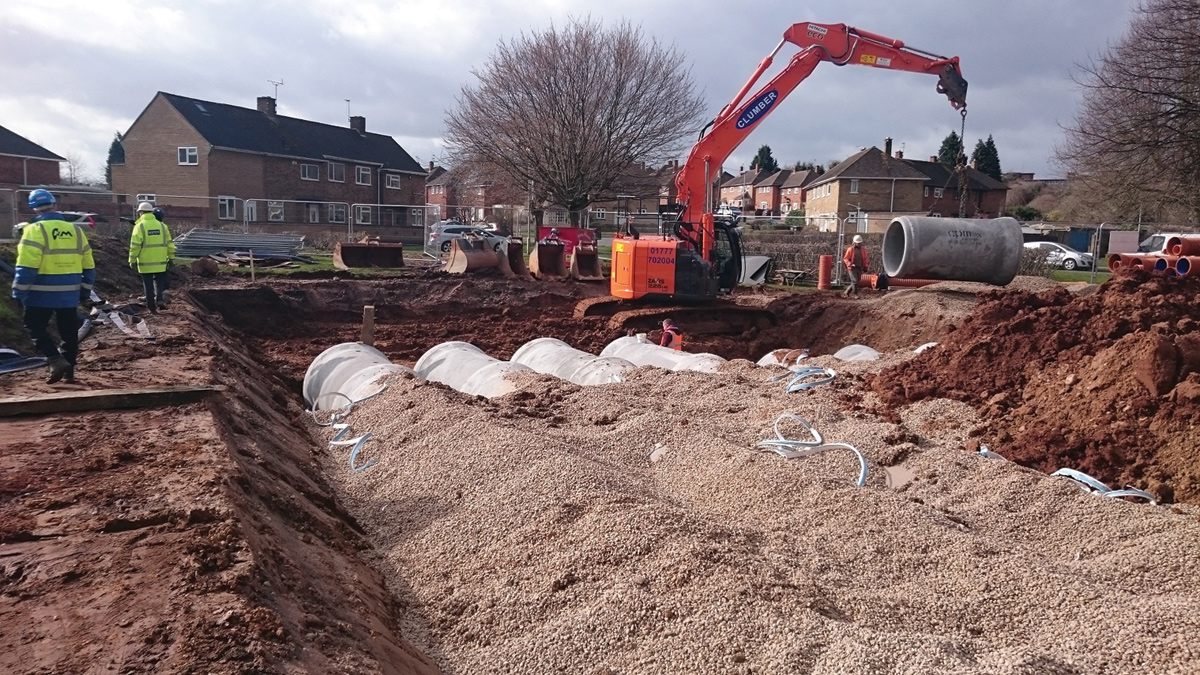
Battered excavation with concrete pipes partially backfilled with gravel – Courtesy of NMCNomenca
Sustainability
Predominantly when combined stormwater storage is required in a restricted depth situation the typical arrangement is to provide a pumped solution. Not content in accepting the ongoing maintenance costs associated with running storm pumps, the team pursued a gravity solution that best utilised the available space.
Whilst the depth available meant that all the available open space had to be exploited, the team agreed that this was the better option and refused to accept what would ultimately have been a higher total carbon solution by using pumps.
Not only does the use of multiple, shallow gravity tanks negate operational carbon, the reduced depth of the tanks meant that excavation, muck disposal and imported material was kept to a minimum.
Innovation
In order to achieve the required minimum gradients in the new storage system both tanks were constructed with a minimum cover of 500mm. Whilst this is outside Severn Trent Water’s design standards, the design team worked with the concrete pipe supplier to prove that the reduced cover did not put the structural integrity of the new pipes at risk.
This proof enabled Severn Trent Water to accept this non-standard approach as part of the solution. The inherent structural strength in the concrete pipes meant that the new storage tanks could withstand potential heavy goods vehicle loading without the need of casting additional concrete protection slabs. This kept the site duration to a minimum. Also as the solution was located within the floodplain of the Burleigh Brook, the concrete pipes also counteracted the uplift force by flood water during storm events.
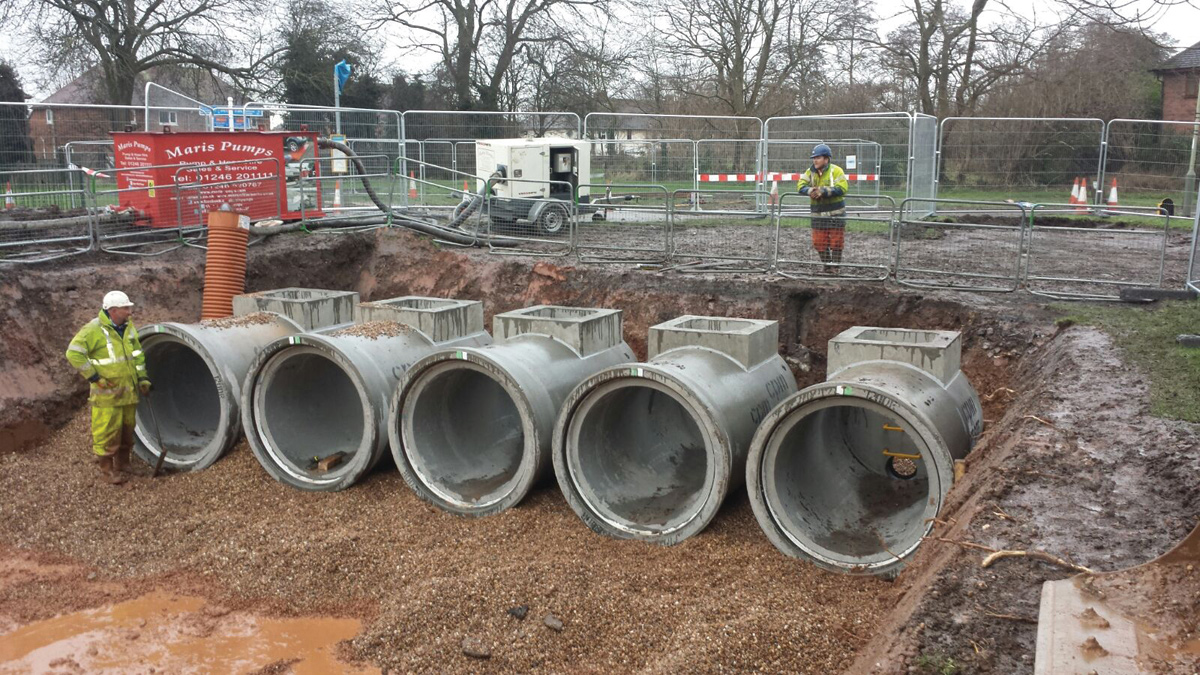
DN1200 concrete end entry manholes positioned in the trench – Courtesy of NMCNomenca
In conjunction with CPM Group (now Marshalls CPM), the concrete pipe supplier, the access chambers required at either end of all 12 (No.) tanks were designed to be manufactured off-site. Two different designs were produced depending on the location and depth of the access chambers.
Those at the shallowest end of the tanks were produced with a precast saddle that fit the curvature of the pipe and incorporated the access point thereby enabling a seating ring to be installed immediately on top. The deeper access chambers were formed as a 90o bend and were compatible with standard precast concrete manhole cover slabs.
All manholes came with steps fitted and pre-cored with inlet or outlet holes compatible with Polypipe’s Ridgisewer and Polysewer products, as used for the remainder of the new drainage.
The adoption of a factory production approach allowed the programme of work on site to be reduced significantly as there was no requirement to use cast in situ concrete. By avoiding the use of conventional manhole construction it was possible to construct the 1,200mm pipes closer together thus reducing the overall footprint. This combination reduced site processes, coupled with the shallow depth, meant the overall health and safety risk on site for the workforce was dramatically reduced.
Project management and procurement
The scheme was crucial for STW’s AMP5 flooding benefit delivery target. Therefore the scheme was required to be completed on site by the end of March 2015. This posed a significant programming challenge for both the design and construction teams.
Severn Trent Water proposed their solution and engaged with NMCNomenca at an early stage in the project conception. This enabled both parties to work collaboratively to progress the design to the satisfaction of all and with the design programme being reduced wherever possible to ensure that construction commenced early enough.
Whilst completion of ancillary works extended into April 2015, the storage tanks were complete in time for Severn Trent Water to meet their commitments, rewarding all of the hard work of the team involved. This collaborative approach by the client, design and build contractor and suppliers throughout the life of the project enabled the innovative solution to be delivered within its tight timescales.
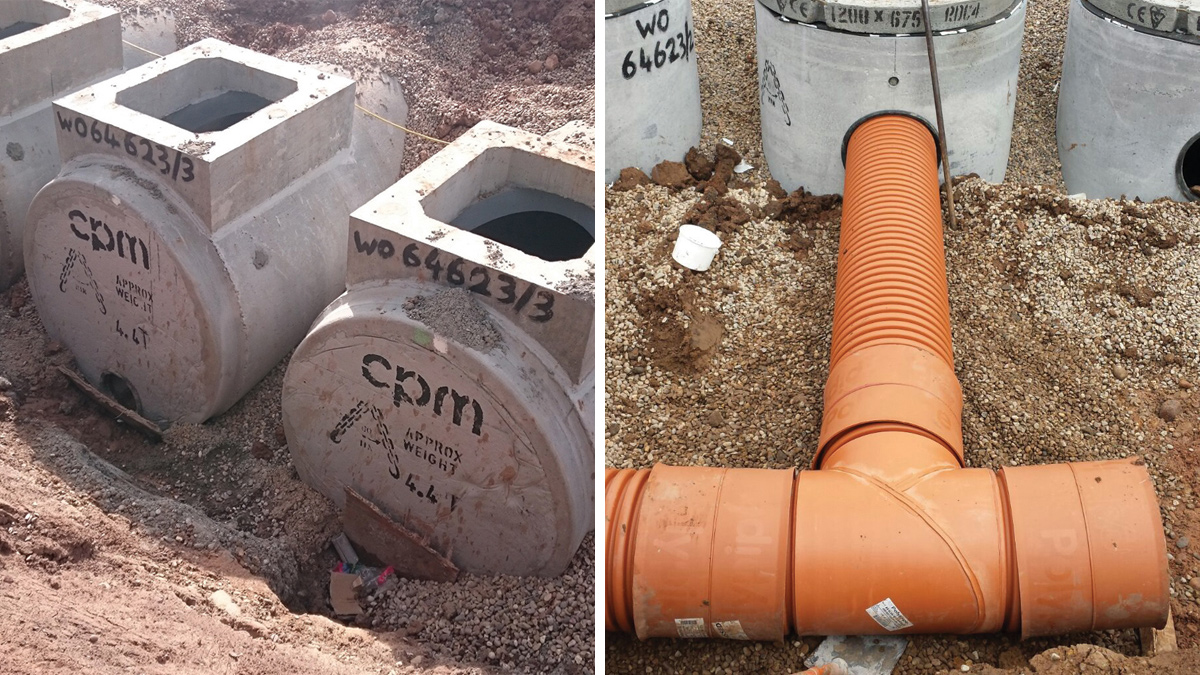
(left) Tank maniflow arrangement and (right) End entry manholes with precast concrete saddles – Courtesy of NMCNomenca
Whole project impact
The local council and Highways Authority were considered to be the key external stakeholders and were consulted at every stage of the project and notified prior to the commencement of construction. This close liaison with the local council was essential given the shallow depth of the proposed pipes and the significant sterilised area caused by the large footprint of the storage.
By constructing the tanks in the recreation grounds during the winter season, disruption for the local community was kept to a minimum. This also allowed the grass to be reseeded in spring for optimal regrowth.
Keeping in line with Severn Trent Water’s customer centric approach to the management of construction, the residents were continually updated on the progress of the design and construction work. In order to manage disruption to travel for the residents in the area a temporary bus stop was used during the construction in the highway with passengers notified via posters on site.
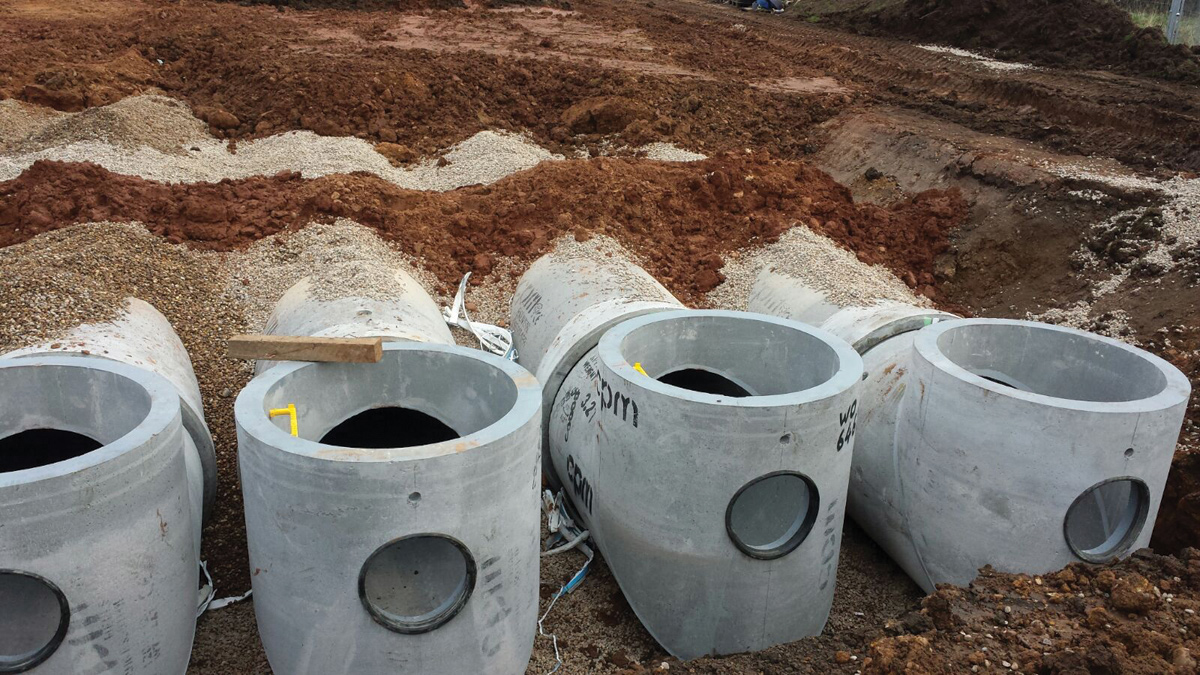
Bespoke manholes manufactured off-site came with pre-cored holes at specified level – Courtesy of NMCNomenca
Conclusion/summary
Construction started on site in January 2015 and was completed in April. The design and build contractor was NMCNomenca and the sub-contractor was Clumber Construction. The key suppliers were CPM Group (now Marshalls CPM) (precast concrete products) and Polypipe (Ridgisewer and Polysewer drainage products). This scheme alleviated the issue through the use of tank sewers constructed at two locations providing storage in the network.
An innovative team approach delivered a gravity solution despite restricted depth, avoiding operational costs of a traditional pumped solution. To enable this an array of concrete pipes with bespoke manholes manufactured off-site were used, maximising the utilisation of available space.
Collaborative working and a factory thinking approach enabled safe but fast construction on site, delivering the project ahead of a very tight programme.






